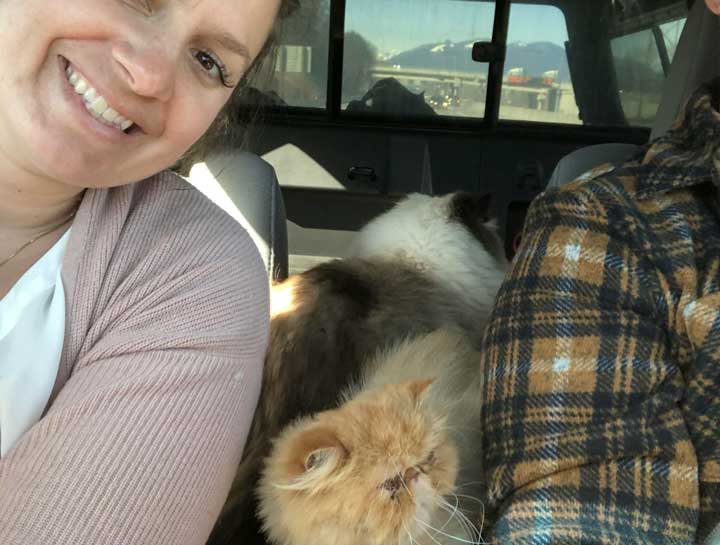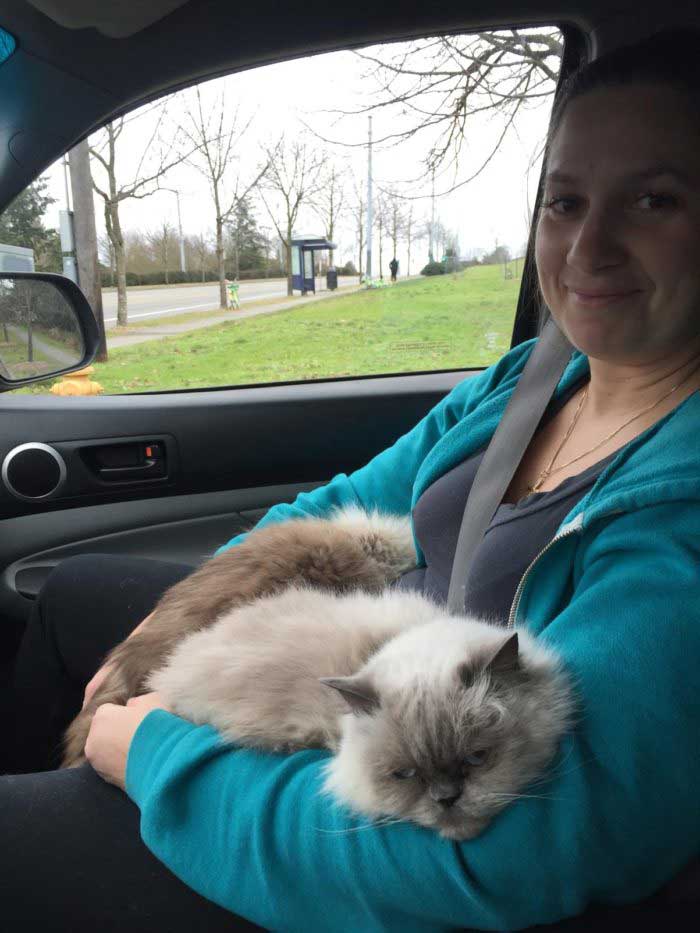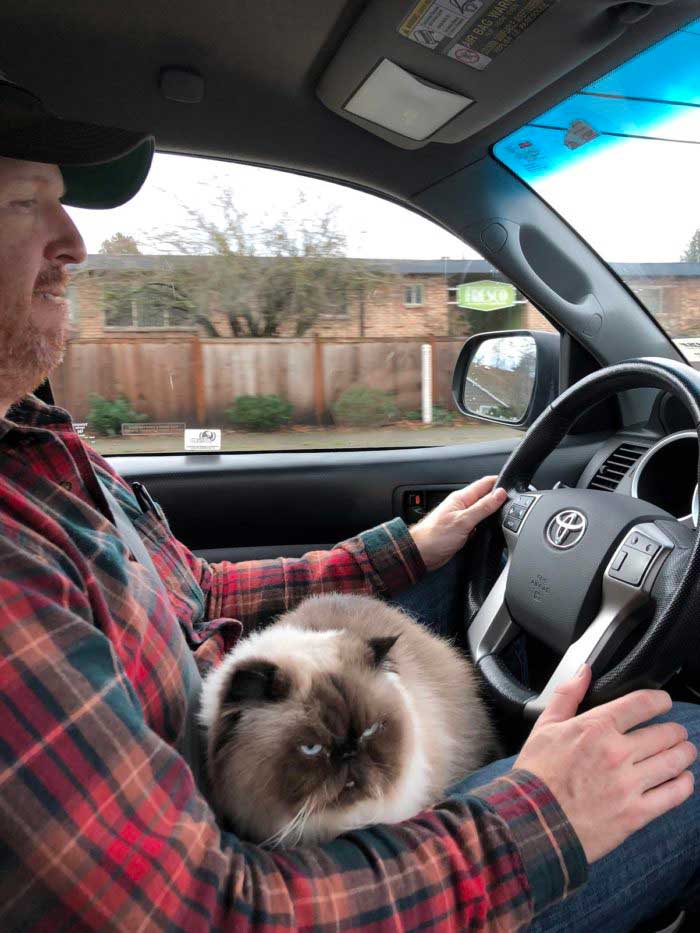Road-Travelin’ Felines!

Hey there! Dr. Lizzy here. I field many questions from worried cat owners about upcoming travel. These questions range from whether to fly or drive with their cat, to techniques and medications that might ease the travel. Felines by in large, do better traveling than their reputation would have you believe. In this piece, I’ll address some of the more common questions and give my pro travel tips.
When prepping your cat for a trip, open the travel carrier to let your pet explore the inside. Start this process two to four weeks in advance of your trip. Take preferred blankets or your dirty clothing and use them to create a cat nest inside the travel carrier. This allows the carrier to pick up some good smells from the home environment. Cats have a number of scent glands on their chin which mark a “home” type scent on surfaces that have contact with chin oil. We want cats to rub up against their carriers to leave this scent footprint. There are also commercially available products made by the Feliway company that mimics this pheromone. The Feliway wipes and a spray fabricate this “home” scent. Feliway produces a multi-cat line, which replicates the interdigital hormone scent that is associated with nursing. The multi-cat pheromone creates more of a “security” scent. Feliway also created a plug-in diffuser that can distribute the pheromones into up to a space and it’s a great idea to use this when moving into a new home.
As you are packing to leave, place your cat in a separate room that does not have any hard-to-reach hiding areas. When the time comes to leave, place your four-legged family member in their carrier as the last step. Line the bottom of the carrier with a disposal absorbable diaper pad. Be sure to pack an extra, in case your pet eliminates onto the pad during travel. Most cats will not go pee or poop during the whole travel process. Because of this, I would ideally try to limit your daily travel time to 8 hours per day. If you are traveling via airline, chose spots in the airport that are quiet and less populated to wait. Never place your pet in the overhead compartment. Your cat should stay in the carrier at your feet for the duration of the plane ride.

If you are traveling via car and will be on the road for many days and/or many hours per day, then set up a cat-friendly space in your vehicle. Folding the back seats down and creating a feline zone in the back is best. That space should include your regular litterbox with your normal litter. I always pack my scooper and a baggie to collect possible fecal material. Cats should also have the option to hide in the car. A carrier with the door open works well. You can also use a cat house or even a cardboard box. Place a blanket or a piece of worn clothing that smells like home into the hidden space. Pad the remaining area with similar fabric. Create a food and water station with two bowls separated from each other by about 6 inches. Place them on a towel as the water dish is prone to spilling around turns and stops. If you’ve never let your cat loose in the car, I recommend having a second person with you the first couple of trips to ensure they don’t try to hide under the foot pedals. Another option is using a harness and leash that won’t allow the kitty to get up into the front seats. Once cats have some car travel under their belt, most find a favorite spot. My cats enjoy being perched on the center console or on my lap.

Some cats become so stressed by travel that they require anxiety medications. My first step recommendation is an herbal product called Composure Pro, which is a delicious little treat that promotes calming behavior. Signs that your pet needs additional anxiety medication beyond herbal supplements are yowling lasting more than 5 minutes, open mouth panting, or injuring themselves in attempts to exit the carrier. It’s important to foster a valid doctor-patient relationship with a local veterinarian to decide which medication to prescribe for your pet. A pharmaceutical named Gabapentin is one of the most common medications to be used for travel anxiety. How Gabapentin works is not completely understood. This medication binds a protein that through a series of cellular processes, dampens the pain or anxiety message traveling down a nerve. Any medication that is given by mouth, should be administered about two hours before the desired time of effect. Pets can also experience motion sickness, which can create a poor travel experience. If your cat vomits during travel, you should consult with your regular veterinarian. There are prescription products that provide treatment for motion sickness.

Cat owners should not be intimidated to travel with their pets. Most kitties enjoy bonding with their owners in new spaces. Travel can be a stressful experience for any pet (or human!), but with the right preparation, faith in your feline family member, and occasionally some pharmaceutical intervention, it can open a new world for you both to share!
At any point in the process, don’t hesitate to reach out and schedule a consult with our team. If you decide to fly with your four-legged family, there are a number of requirements to check off, depending on your destination. Contact us to help plan flying with your pets.
Safe travels, Dr. Lizzy Dean
